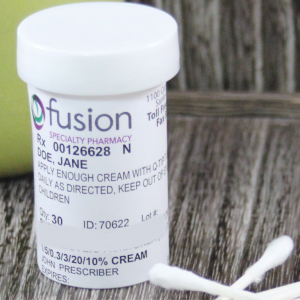KELOID SCARS

For some people, a keloid scar can appear following a surgery or injury, even if the injury is minor. A keloid, classified as a raised scar, is formed because the body produces too much collagen to that area during the healing process.
While collagen growth is normal for healing, a keloid scar is known to grow outside of the margins of the original wound. Because of the overgrowth of new tissue, keloid scars may restrict the natural movement of muscles and tendons. As well as, reduce the flexibility of the skin.
Here are some further classifications for a Keloid Scar:
- Keloids are firm, rubbery lesions or shiny fibrous tissue.
- Keloids can restrict movement and reduce skin elasticity
- They can vary in color and are often highly pigmented (appearing darker than normal skin tone).
- They occur more frequently in the second decade of life, 20 years old and older.
- There is a 90% rate of recurrence after surgical removal.
- Studies have shown that keloid scars are more common among those who are of African and Asian descent.
- Keloid scars can be painful.
TYPICAL TREATMENTS
Treatments for keloid scars can include steroid injections, chemical therapies, laser therapies, surgical revision of the scar, radiation therapies and more.
Fusion Specialty Pharmacy’s customizable Scar Gel will require a prescription from your physician. Please contact us, we will gladly contact them on your behalf.
RELATED PRODUCTS
additional information
Can keloid scars return?
Unfortunately, some keloid scars can reappear, and may even do so after a surgical procedure is done to remove the initial scar.
My keloid scar is painful, can you help me?
YES! Contact us and we’ll be happy to talk to you about a customized formula that may not only help heal the scar, but also may help with the pain.
RELATED ARTICLES
Keloid Scar Case Study
SUMMARY: Caucasian female who had mole removal surgery on the back of her upper arm. Keloid scars formed during the healing process where the incisions were made. With consistent twice a day application of her Fusion Specialty Pharmacy Scar Gel, the color had significantly decreased, and the scars were flattening out after 180 days.






